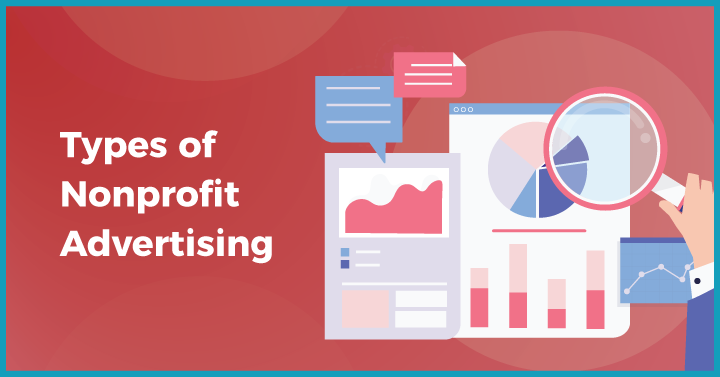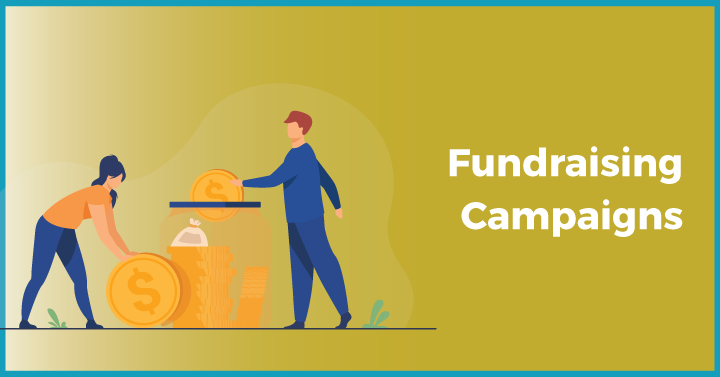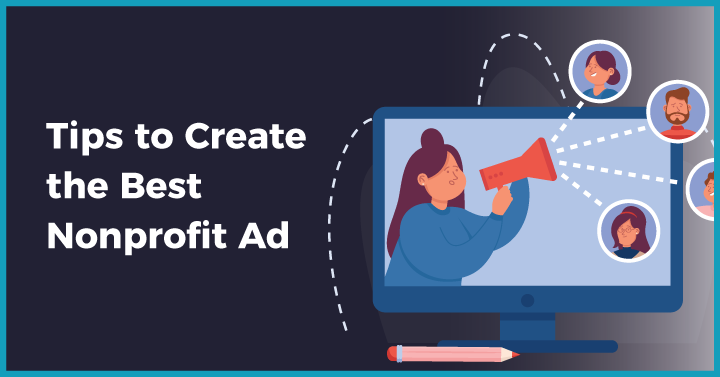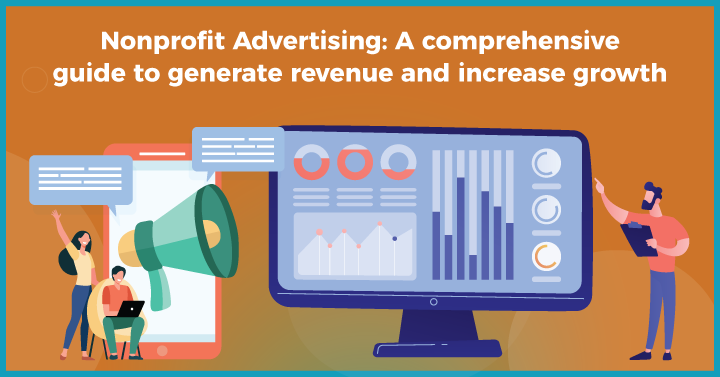The technical evolutions of the digital age have fostered completely new ways for charities to reach the general public. Through Google, Twitter, Facebook, email, and other online channels, nonprofits can target segments of the population with a much greater degree of sophistication than ever before.
Online advertising for nonprofits can be hugely beneficial in helping to expand awareness and bolster fundraising as long as you use it judiciously.
To read about our comprehensive article on digital marketing for nonprofits, click here.
1. What Is Nonprofit Advertising?
Nonprofit advertising is principally used to promote a particular cause. This might be protecting wildlife (WWF), saving the environment (Greenpeace) or cardiovascular research (American Heart Association). This commonly takes place through such channels as Google display ads, social media sites, and email marketing.
The ultimate objective might be to stimulate donations or canvas for volunteers, in order to support the organization’s long-term goals to promote eco-friendly governmental policies or fund life-saving medical breakthroughs.
2. Why Is Nonprofit Advertising Important ?
Online advertising for nonprofits is generally more affordable compared to traditional ads on television or in print. Not only are more people now streaming shows than watching them on an actual TV, it’s also easier to track the impact of ads online, ensuring that a charity’s budget is being spent in the most effective manner.
Thanks to modern-day data gathering online, nonprofits can be hyper-targeted with their ads. This means you can design customized campaigns that will only reach specific markets or demographics – all at less cost. As well as enabling nonprofits to engage in real-time with consumer responses and feedback, online advertising also opens up access to younger generations, nearly 50% of whom use the internet “almost constantly,” according to Pew Research.
3. 8 Types of Nonprofit Advertising

3.1 Display Ads on Google
Responsive display ads are a visual way of getting your message in front of people via the Google Display Network. You can upload your images, videos, and/or text to the interface, and Google will do the rest, using machine learning to adjust the size and appearance to fit the available space across 35 million websites and apps, as well as Google-owned properties like YouTube and Gmail.
This option saves you a lot of time because you won’t have to custom design a whole bunch of different ads for different dimensions. Plus, you’re taking advantage of Google’s ability to remarket and automatically target audience segments that are more likely to respond to your campaign. On the downside, you have less creative control over the finished product and clickthrough rates are lower than for other online advertising formats.
3.2 Social Media Ads
All the major social media channels offer a paid ad function that can be useful for online advertising for nonprofits, but the demographic you are targeting will strongly influence which one you want to focus on. TikTok, Twitter, and Instagram, for instance, have been found to skew significantly younger than Facebook.
Unlike display ads or email marketing, social media ads tend to allow for more interaction with your message, which has the obvious benefit of making people feel more engaged but the potential downside of attracting negative feedback. While social media campaigns can provide a treasure trove of data, they can also be more time-consuming to deliver.
3.3 Email Marketing

Email marketing is a fairly common way for nonprofits to stay in touch with previous donors and volunteers. In fact, nearly 79% say it’s important to the overall success of their organization. Strong contact lists can be easily developed by providing easy sign-up via online channels as well as through in-person events.
Assuming you are on top of the data privacy laws in your region, email marketing is a great way to stay in touch with people who have actively indicated their interest in your nonprofit, providing you with a medium to deliver updates and timely calls to action. On the con side, it’s not as easy to engage individuals with email marketing as with social media or influencers.
3.4 Local Radio Promotion
With all this talk about online advertising for nonprofits, it’s easy to forget that radio is still incredibly popular. According to 2020 research, 95% of Australians still owned a radio, with 78% of listeners tuning into FM stations. As such, delivering a well-thought-out audio campaign can still be beneficial for an NGO.
While the huge audience reach is a bonus in some ways, in others it means you can’t reach the same level of sophistication when it comes to segmenting your campaign by demographics – everybody is going to get the same messaging, regardless of any research, you’ve done into what appeals to which groups.
3.5 Influencer Marketing
Influencers are people who have built a dedicated following based around a specific topic, either on a single or multiple social media channels. In terms of online advertising for nonprofits, their endorsement can be a quick, easy way to massively boost awareness of your brand to a particular audience and reach hard-to-attract younger generations who ignore traditional marketing approaches.
Once you’ve identified a suitably popular influencer whose values align with your charity’s, it can be an enormous weight off your shoulders, since the influencer will usually assume responsibility for engaging their followers and will probably know best how to market to their fans in a way that stimulates action. On the other hand, influencers can be risky bets, since one wrong post could negatively impact your company’s image. Plus, it’s hard to track their impact, which is why there has been such a huge debate around the overall value of influencer marketing in recent years.
3.6 Fundraising Campaigns

Donation websites like Givelify and GoFundMe are another way to get your brand in front of the general public. These online platforms have become very popular in the last decade and can form the basis for a multichannel plan that not only raises funds but also awareness.
You can take advantage of a funding site’s existing reputation and pool of users to build up your donors. Plus, people who are signed up to web pages that host fundraising campaigns directly is almost certainly looking to contribute to attractive causes. On the other hand, fundraising campaigns require email marketing, social media strategies, and Google Ads to direct people to the donation page, which makes them a complex investment of resources.
3.7 Giveaway Promotional Items
Tote bags, T-shirts, and ballpoint pens are some of the more common promotional items we see tossed about, but branded lip balm, reusable water bottles, and even hand sanitizer are also not unheard of when it comes to giveaways.
Everybody loves free stuff, especially useful free stuff, and having your branding out in the world without having to pay for advertising is arguably a more organic way to focus attention on your cause. However, it’s important not to squander the goodwill you generate by handing out shoddy merchandise or unrecyclable materials. Additionally, who actually receives (and later sees) your freebies is largely potluck – no sophisticated analysis available here.
3.8 Partner Up with Businesses
Think Gillette and Movember, Starbucks and Mermaids, Cadbury and Age UK – these are just some of the examples of innovative ways nonprofit organizations have partnered up with corporate entities to deliver cleverly, moving or memorable ad campaigns.
The challenge of making this work is that, unless you’re already a high-profile movement, it’s often time-consuming and difficult to make the right contacts and nurture a relationship with a business. If you can build bridges with a for-profit that aligns nicely with your objectives, however, the result is usually an injection of resources into your initiative and a chance to generate buzzy PR.
4. 3 Tips to Create the Best Nonprofit Ad

4.1 Do Thorough Research
Regardless of your organization’s objectives, how you do NGO digital marketing should start with in-depth research about the different demographic groups you hope to reach, including factors such as age group, education level, and income.
4.2 Write Engaging Content for Promotion
Online advertising for nonprofits needs to feature content that will engage your target demographic. That can range from eye-catching infographics (84% of people who use them consider them effective) to videos (92% of marketers say they are an important part of their media strategy).
4.3 Announce the Ad at the Right Place and Time
Showing your ad in the right place and the right time has been made so much easier with the advent of digital solutions that track what people are looking at in their browsers. This makes it much simpler to engage in remarketing and customer matching.
5. Nonprofit Online Advertising Examples
One of the most prominent nonprofit advertising examples was the Ice Bucket Challenge, which raised awareness for the neurodegenerative disease ALS. Although it originally started as a social media phenomenon unrelated to any particular organization, it managed to raise $115m for the ALS Association in 2014.
WaterAid’s Give a Sh*t campaign had a catchy tagline that aimed to inform people about the need for reliable sanitation in disadvantaged communities. By downloading a free app, individuals were able to create their own poop emoji that they could send to friends and family, meanwhile donating money to the cause.
The Truth Initiative utilized the power of hashtags to promote its #BigTobaccoBeLike scheme, which partnered with Vine and Instagram influencers to spread a message about the detrimental impact of social smoking. Its videos garnered over 59 million views.
About Us
Growth Ganik is a rapidly evolving digital marketing agency in Sydney, Australia that specializes in SEO, content marketing, marketing strategy and lead generation.
We work with clients from leading brands and industries such as B2B SaaS, nonprofits and more to develop profitable digital marketing solutions that are data-driven to support all kinds of business goals from widening user bases, gaining more traction for online engagement, to increasing conversion and helping businesses scale up.
For creative tailor-made digital solutions and sustainable growth insights, get in touch with us!











